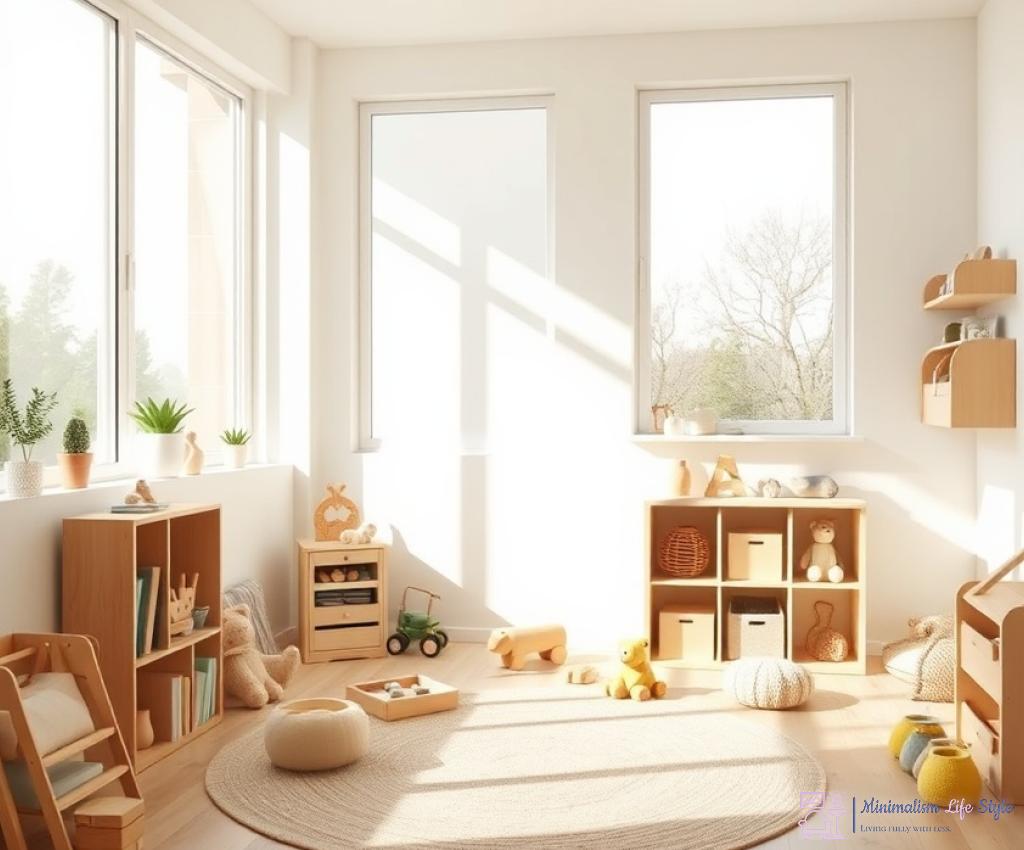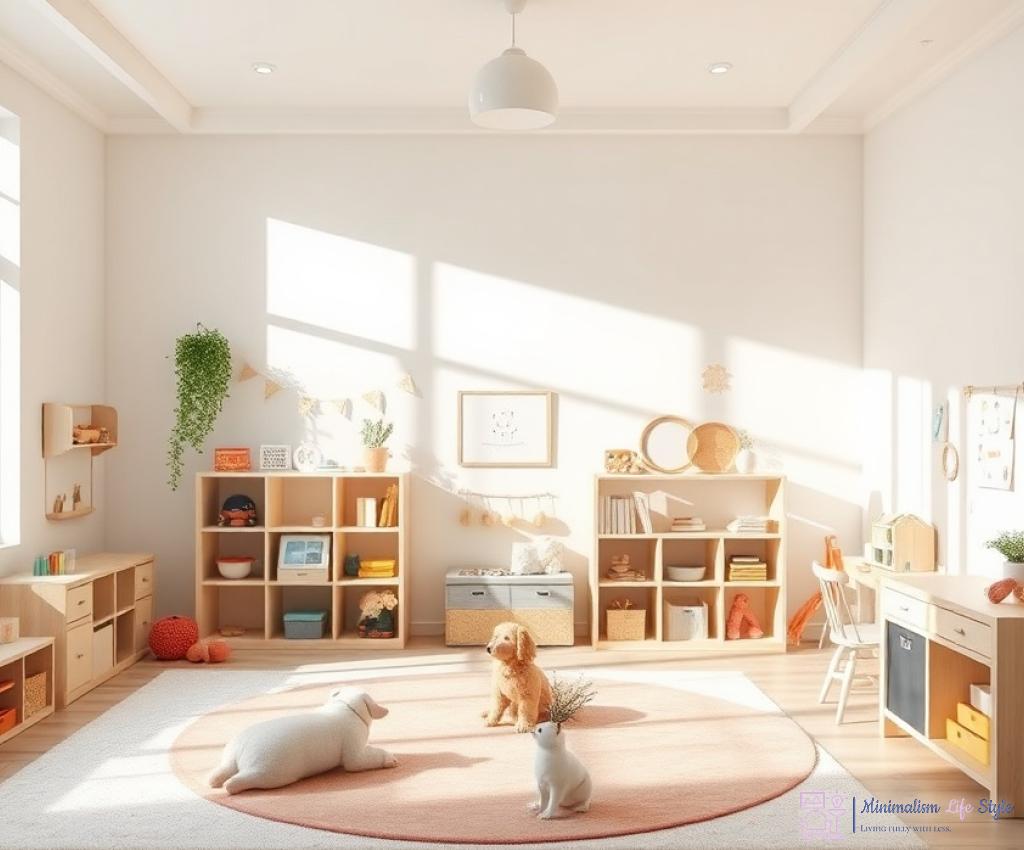The Power of Minimalism in Play

Unleashing Creativity Through Less
In a world overflowing with toys and distractions, the concept of minimalism in play is gaining traction among parents and educators alike. The essence of minimalism is not just about having fewer items; it’s about creating an environment where children can explore their creativity without the overwhelming clutter. By simplifying their surroundings, we allow our children to focus on imaginative play, which is crucial for their cognitive development.
The Benefits of a Minimalist Playroom
When we think of a playroom, it’s easy to imagine vibrant colors and toys spilling from every corner. However, a minimalist approach can transform this space into a sanctuary for creativity. Here are some compelling benefits:
- Enhanced Focus: With fewer distractions, children can concentrate on their imaginative endeavors, leading to deeper engagement in their play.
- Encouragement of Problem-Solving: Limited resources spark creativity. Children learn to use their imagination to come up with new ways to play, fostering critical thinking skills.
- Clean-Up Simplicity: A minimalist space is easier to maintain, teaching children responsibility and the importance of tidiness.
- Quality Over Quantity: Fewer toys often means higher quality. Investing in versatile, durable toys can provide endless possibilities for play.
Designing the Ideal Minimalist Playroom
Creating a minimalist playroom doesn’t mean stripping it down to bare essentials. Instead, it involves thoughtful selection and arrangement of items that inspire creativity. Here’s a simple table to help guide your design:
| Element | Purpose | Examples |
|---|---|---|
| Toys | Encourage imaginative play | Blocks, art supplies, dolls |
| Furniture | Facilitate play and relaxation | Soft seating, low tables |
| Storage | Maintain an organized space | Baskets, shelves |
By focusing on these essential elements, parents can create a harmonious environment that fosters imagination while keeping the chaos at bay. Remember, less truly can be more when it comes to play!
Crafting a Versatile Play Space

Creating Multi-Functional Areas
In a minimalist playroom, every corner should serve a purpose, inviting children to engage in various forms of play. By designing multi-functional areas, we can maximize the use of space while keeping it uncluttered. For instance, a simple rug can transform into a stage for a puppet show, a cozy reading nook, or a designated area for arts and crafts. This adaptability not only enhances creativity but also teaches children resourcefulness. Each time they step into their playroom, they encounter new opportunities for exploration, making every play session unique and exciting.
Incorporating Natural Elements
A minimalist playroom thrives on the beauty of simplicity, and what better way to embrace this than by incorporating natural elements? Wooden toys, plants, and natural light can create a serene atmosphere that stimulates the imagination. The warmth of wood provides a tactile experience that plastic toys simply cannot replicate. Furthermore, introducing plants into the playroom can spark curiosity about nature, inviting children to observe and learn about their environment. Natural light plays a critical role as well; it not only brightens the space but also influences mood and energy levels, making playtime even more enjoyable.
Encouraging Open-Ended Play
At the heart of a versatile play space is the idea of open-ended play. This concept revolves around providing children with resources that can be used in countless ways, rather than toys that dictate a specific function. Loose parts like blocks, fabric scraps, and natural materials can be combined in endless configurations, stimulating creativity and imaginative thinking. When children are given the freedom to experiment and create, they develop critical skills such as problem-solving and collaboration. In essence, a minimalist playroom is not just about limiting clutter; it’s about fostering an environment where the imagination can soar, unrestricted by conventional boundaries. By focusing on these principles, parents can craft a play space that is as versatile as it is inviting, encouraging children to explore the limitless possibilities of their creativity.
Imagination Unleashed: Fewer Toys, More Creativity
In the quest for a vibrant playroom, parents often find themselves inundated with countless toys, each vying for attention. Yet, paradoxically, it is the act of reducing these distractions that can lead to a more enriched imaginative experience for children. By embracing simplicity, we discover that a thoughtfully curated selection of toys can unlock a wellspring of creativity, allowing children to engage more deeply with their play. This journey towards minimalism is not merely about less; it is about crafting an environment that encourages exploration and innovation.
Imagination Flourishes in Simplicity
When toys are abundant, children may feel overwhelmed, often resorting to passive play rather than active engagement. However, when fewer toys are available, children are compelled to utilize their imagination to transform simple items into extraordinary adventures. For instance, a single set of building blocks can become a castle, a spaceship, or a mountain range, depending solely on the child’s creativity. This flexibility in play encourages them to think outside the box and fosters a sense of ownership over their imaginative experiences.
Quality Over Quantity: The Impact of Thoughtful Selection
Investing in high-quality, versatile toys is essential in a minimalist playroom. Rather than filling the space with countless options, parents can select items that offer multiple ways to play. For example, a well-crafted wooden set can be used for building, role-play, or even as a tool for learning about shapes and colors. By focusing on quality over quantity, children are not only more likely to cherish their toys but also to engage with them in a meaningful way. This strategic approach leads to deeper, more imaginative play sessions, as children learn to see the potential in every object around them.
Table: The Creative Potential of Minimalism
| Aspect | Traditional Playroom | Minimalist Playroom |
|---|---|---|
| Variety of Toys | Overwhelming | Curated Selection |
| Imaginative Play | Often Passive | Active Engagement |
| Clean-Up | Time-Consuming | Simplified Process |
| Learning Opportunities | Limited | Endless Possibilities |
Ultimately, the shift towards a minimalist playroom is not just about reducing clutter; it’s about creating a setting where children can thrive creatively. As they learn to embrace fewer toys, they discover the magic of imagination, transforming their playtime into a canvas of endless possibilities. By fostering this environment, parents are not only simplifying their space but also enriching their child’s developmental journey.
Engaging Activities That Inspire Exploration
Unleashing the Adventurer Within
When we embrace the concept of a minimalist playroom, we open up a world of possibilities for our children. The magic of simplicity lies not only in the reduction of clutter but also in the engaging activities that can spark curiosity and inspire exploration. By providing children with fewer but more versatile tools for play, we encourage them to take initiative and delve into their imaginative worlds with enthusiasm. Instead of relying on pre-packaged toys, children are invited to create their own adventures using the resources available to them.
Transformative Play Experiences
Consider the power of transforming everyday objects into vehicles for creativity. A simple cardboard box can morph into a spaceship, a fort, or even a treasure chest. This fluidity in the play experience nurtures a sense of ownership and encourages children to think critically about their surroundings. By engaging in such imaginative play, kids develop problem-solving skills and learn to adapt their environment to fit their narratives. The simplicity of a minimalist playroom allows children to explore their creativity without the constraints of traditional toys, leading to richer and more meaningful play sessions.
Collaborative Exploration Opportunities
Moreover, a minimalist playroom fosters collaboration among peers. With fewer distractions, children are more inclined to engage with one another, sharing ideas and building on each other’s imaginative concepts. Activities such as group storytelling or collaborative art projects can take center stage, promoting teamwork and communication skills. This dynamic not only enhances their ability to work together but also elevates their individual creative processes. By encouraging this collaborative spirit, parents are not just simplifying play; they are cultivating a vibrant community of young explorers, ready to take on the world of imagination.
Creating a Calm Environment for Play
In the realm of play, a serene environment can act as a canvas for imagination, allowing creativity to flourish without the chaos that often accompanies a cluttered space. By establishing a calm atmosphere within a minimalist playroom, we provide children with the freedom to explore their thoughts and ideas, making each playtime a unique journey of discovery. This approach not only enhances their imaginative capabilities but also nurtures emotional well-being, creating a harmonious balance between play and tranquility.
Embracing Soft Colors and Textures
When designing a playroom with simplicity in mind, the choice of colors and textures can significantly impact the overall ambiance. Soft, neutral tones can evoke feelings of calmness, making the space inviting and peaceful. Instead of vibrant colors that may overstimulate, consider hues like pale blues, gentle greens, and warm beiges. These shades can create a soothing environment that encourages relaxation and focused play.
Additionally, the inclusion of varied textures can enrich the sensory experience without overwhelming it. Plush rugs, soft cushions, and natural fabrics invite children to engage with their surroundings in a gentle manner, fostering a sense of comfort and security. This sensory-rich environment not only supports imaginative play but also encourages mindfulness—a vital component of emotional development.
Establishing Zones for Different Activities
A thoughtful layout can further enhance the calming atmosphere of a minimalist playroom. By establishing distinct zones for various activities, children can seamlessly transition between different forms of play without distraction. For instance, a cozy reading nook with low shelving can be designated for quiet time, while an open area with mats can serve as a space for active play. This intentional organization allows children to choose how they want to engage, promoting autonomy and reducing feelings of overwhelm.
To create these zones effectively, consider the following:
- Reading Corner: Stock with a small selection of books, creating a cozy retreat.
- Art Station: Equip with minimal supplies, such as paper and crayons, to inspire creativity.
- Active Play Area: Use soft mats or a dedicated rug to facilitate movement and exploration.
By defining these areas, children can better navigate their play experiences, allowing for deeper concentration and engagement.
Incorporating Nature and Natural Light
One of the most effective ways to cultivate a calm play environment is through the integration of natural elements. Bringing the outdoors inside can significantly enhance a child’s connection to the environment while promoting a sense of tranquility. Consider adding plants that are safe for children, which not only improve air quality but also serve as living decor that sparks curiosity and wonder.
Moreover, maximizing natural light can transform the playroom into a warm and inviting space. Positioning furniture to take advantage of sunlight can create a bright atmosphere that energizes children without causing overstimulation. When children are bathed in natural light, they are more likely to feel balanced and engaged, fostering an ideal setting for imaginative exploration.




